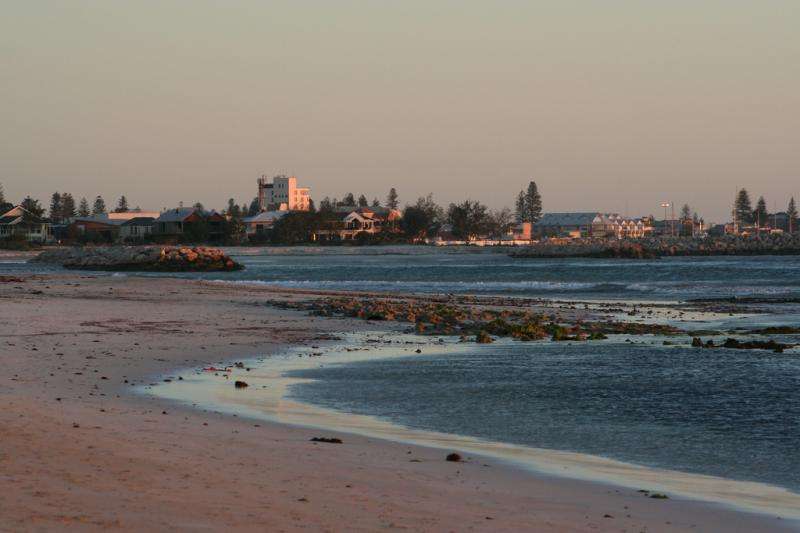The findings show that coastal erosion south of Geraldton is linked to naturally occurring processes, causing beach accumulation offshore. Credit: jackoscage
A health check of beaches near Geraldton has revealed northern areas closer to the port are severely eroded while the southern beaches are quite stable.
Curtin University researchers recently completed a two-year study into the erosion of sediments that make up the Geraldton coastline, focusing on two main bay areas.
They found both natural and artificial sources were contributing to sediment build-up in the region, lead researcher Sira Tecchiato says, particularly around the northern embayment where beach erosion is at greater risk.
"There is only one area that is severely eroded, in the northern parts of the bay. There is a dredged shipping channel and we found that had impacted local sediment dynamics," she says.
However, the findings show that coastal erosion south of Geraldton is linked to naturally occurring processes, causing beach accumulation offshore.
"There is currently a lot of sediment bypassing through the area and that is stabilising the beaches," Dr Tecchiato says.
"So the situation is actually not that bad. Because the Geraldton Port is responsible for nourishing the beaches that are most affected by erosion on a regular basis, this helps to keep them stable."
Methodology could benefit other WA coastal areas
The report is a ground-breaking first that could provide a building block for studies of sediment dynamics in Midwestern Australia, improving local researchers' ability to assess coastal erosion and develop rehabilitation strategies in other regions.
Dr Tecchiato says the approach to assessing the dynamics of sediment transfer at Geraldton, which occurs dominantly from south to north, could be applied to a larger region with similar environmental and hydrodynamic settings.
"The Midwest features a complex system, and we found biogenic sediments as well as carbonate dune and river-derived sediments present in the area," she says.
The study found that biogenic sediment supply from seagrass meadows is the main sediment source, with coastal infrastructure modifying sediment dynamics.
"For this study we collected about 100 sediment samples in Geraldton, then returned back to the laboratory and analysed them for grainsize, grain types and mineralogical compositions," she says.
"We also looked at the offshore imagery to understand how the geomorphology was linked to the sediment transfer, and the local habitats, including the seagrass beds and how they contributed to sediment production and stabilisation of the [coastline]."
More information: Sira Tecchiato et al. Carbonate sediment dynamics and compartmentalisation of a highly modified coast: Geraldton, Western Australia, Geomorphology (2016). DOI: 10.1016/j.geomorph.2015.11.014
Journal information: Geomorphology
Provided by Science Network WA
This article first appeared on ScienceNetwork Western Australia a science news website based at Scitech.
























